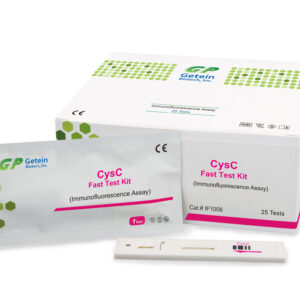Description
Human Immunodeficiency Virus (HIV) is the etiologic agent of Acquired Immunodeficiency Syndrome (AIDS). HIV infection can be transmitted by sexual contact, exposure to infected blood or blood products, or by an infected mother to the fetus. Within three to six weeks of exposure to HIV, infected individu- als generally develop a brief, acute syndrome characterized by flu-like symptoms and associated with high levels of viremia in the peripheral blood.
In most infected individuals this is followed by an HIV-specific immune response and a decline of plasma viremia, usually within four to six weeks of the onset of symptoms. After seroconversion, infected individuals typically enter a clinically stable, asymptomatic phase that can last for years. The asymptomatic period is characterized by persistent, low-level plasma viremia and gradual depletion of CD4+ T lymphocytes, leading to severe immunodeficiency, multiple opportunistic infections, malignancies, and death.





